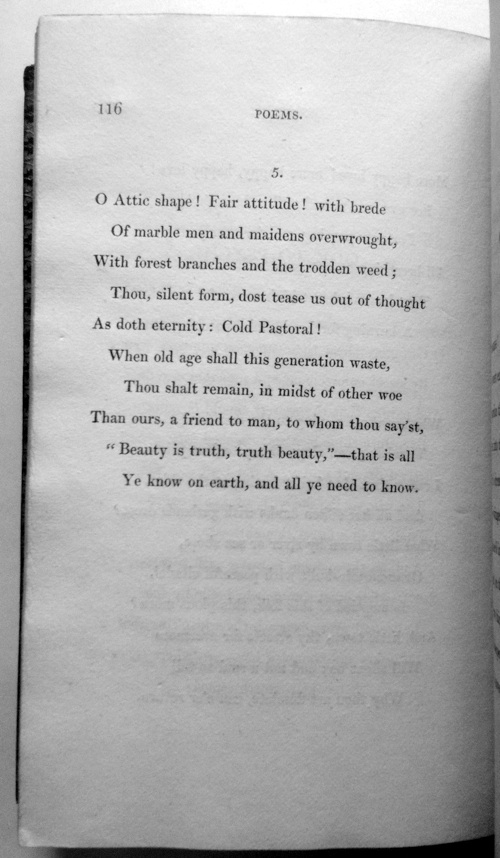“Beauty is truth, truth beauty,” — that is all
Ye know on earth, and all ye need to know.

Thomas Dilworth, writing in the TLS for 22 April 2011, discusses Keats’ poem “Ode on a Grecian Urn”, written in May 1819 (and shown above in the first edition of Lamia, Isabella, The Eve of St. Agnes, and Other Poems, 1820).
“Scholars once wondered whether Keats had in mind a specific urn or sculpted frieze, but long ago gave up trying to discover one. There is, however, a specific and identifiable work of art that Keats is using as his model and source, and is implicitly referring to. It is not a work of visual art, however, but a poem : Shakespeare’s “The Phoenix and the Turtle”. While the citation of the Keats poem in the essay is not terribly precise (many unnecessary capital letters in the closing lines), Dilworth makes a strong case for the intertextual nature of the Ode: “Shakespeare supplies the essential terms of the paradox, and he supplies an urn. He establishes that Beauty is Truth or, rather, that each is the other and points to eternity as the context in which the apparent contradiction is resolved.” Dilworth’s aim is to elucidate meaning and is not, fundamentally, reductive.
The “Ode on a Grecian Urn” must now be classed as a precursor of the critical fiction : allusion to the poem by Shakespeare is inextricable from the structure and meaning of the Ode.
This example emphasizes a key point about the critical fiction form : above all, the writing must function as an independent work of art. The power and poignancy of Keats’ poem is only increased by deeper understanding of the well from which some of its waters were drawn.